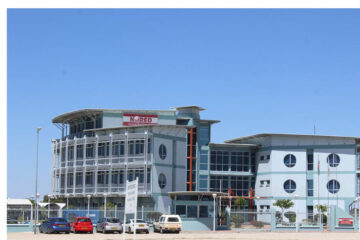Ester Mbathera
Namibia’s marine resources face increasing challenges, as the 2024 Horse Mackerel and Small Pelagic Survey revealed an 8% decline in horse mackerel biomass, a fragile recovery for sardines, and operational setbacks worsened by environmental anomalies.
The survey, conducted between 25 March and 22 April along the northern Benguela ecosystem, assessed species abundance, biomass, and distribution to guide sustainable fishing practices for the 2025 season.
The findings were presented last Wednesday during the High-Level Panel for a Sustainable Ocean Economy (Ocean Panel) held in Walvis Bay.
The Ocean Panel brought together representatives from 19 nations as a coalition of world leaders committed to sustainably manage 100% of the ocean under their jurisdiction.
The countries, apart from Namibia, include Australia, Fiji, Indonesia, Japan, Kenya, Norway, Palau, Portugal, Seychelles, the United States, the United Arab Emirates, and the United Kingdom, among others.
The Ocean Panel, established in 2018, aims to achieve effective ocean protection, sustainable production, and equitable prosperity
According to the report, the survey estimated a total horse mackerel biomass of approximately 829,000 tonnes, an 8% decrease compared to 2023.
Juvenile fish constituted 13% of the population, with adults dominating at 87%. Notably, 97% of the biomass was found in inshore waters.
It also states that Cape horse mackerel abundance was recorded at 33 billion, while sardines showed signs of recovery with an estimated 765 914 tonnes of biomass—a significant improvement from 2023.
Anchovy and round herring biomass were reported at 82 263 tonnes and 78 905 tonnes, respectively.
“While the increase in sardine biomass is promising, the low prevalence of advanced maturity stages in horse mackerel is concerning. It reflects the impact of fishing pressure on the species,” survey leader Moses Kalola stated in the report.
Distribution and Trends
The survey area spanned 29 611 nautical miles, with the highest horse mackerel density recorded in Stratum IV, north.
Adult fish preferred deeper inshore areas, while juveniles were found closer to the surface.
Researchers also observed a southward shift in sardine distribution, with 84% of the biomass located in Stratum VI.
Sardine spawning grounds, primarily near Conception Bay, showed recovery.
However, sardine maturity patterns indicated a potential lack of advanced spawners, which could hinder long-term stock recovery.
“The resurgence of sardines is encouraging, but sustainable management is crucial to ensure this trend continues,” noted Kalola.
Challenges and Environmental Factors
Delays caused by mechanical issues with the research vessel resulted in a late start to the survey. Furthermore, varying environmental conditions, including strong winds and temperature anomalies, impacted fish distribution.
In particular, thermoclines and fronts concentrated food sources but restricted habitable areas due to low oxygen levels.
The findings underscore the need for vigilant resource management.
“Sustaining Namibia’s marine resources requires collaborative efforts and adaptive strategies to address environmental and human pressures,” Kalola emphasised.
Norway’s Georg Børsting, co-chair of the Ocean Panel, also highlighted the urgent need for cooperation.
He said the ocean faces unprecedented challenges, including overfishing and pollution.
“As members of the panel, we share a common interest in finding sustainable solutions. This conference will be a pivotal moment to mobilize commitments in this critical decade of action. It’s an opportunity to turn our ambitions into tangible results,” he said during the opening of the conference last week.




